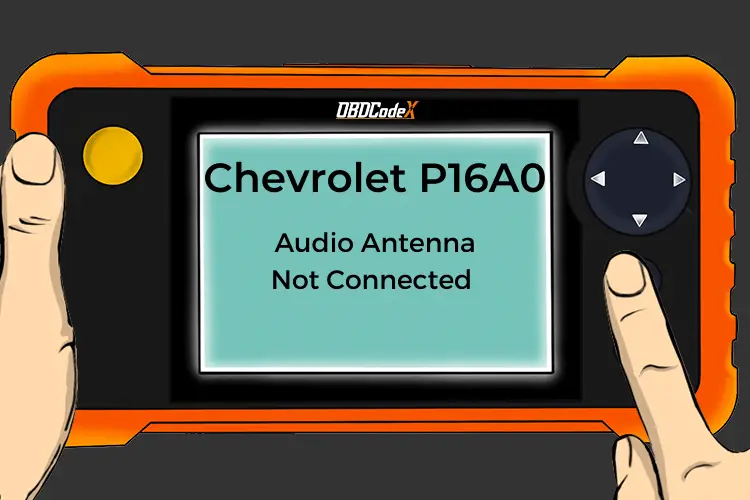P048C: Exhaust Pressure Control Valve Position Sensor/Switch Circuit Range/Performance
Is your scanner showing P048C?
No worries. We'll show you what it means and how to deal with it.
P048C: Exhaust Pressure Control Valve Position Sensor/Switch Circuit Range/Performance
OVERVIEWWhat Does The P048C Code Mean?
This generic powertrain diagnostic trouble code (DTC) typically applies to all OBD-II vehicles equipped with an exhaust pressure control valve sensor or switch. That may include but is not limited to vehicles from VW, Audi, Toyota, etc. Although generic, the exact repair steps may vary depending on make/model.
The exhaust pressure control valve (EPC) is a solenoid controlled valve used to regulate back pressure during cold temperatures. This helps increase cabin heat, aids in cold starting and windshield defrosting.
In most cases, the powertrain control module (PCM) uses information from the exhaust back pressure sensor (EBP), intake air temperature (IAT) sensor and manifold absolute pressure (MAP) sensor to determine control of the valve. If the PCM detects a problem with the EPC or the IAT, it will disable the ECP. Typically, the ECP is found on diesel engines.
Code P048C is set when the PCM detects a performance problem within the exhaust pressure control valve circuit.
What Are The Symptoms Of The P048C Code?
Symptoms of a P048C trouble code may include:
- Illuminated check engine light
- Increased emissions
- Poor engine performance
- Hard starting
What Are The Potential Causes Of The P048C Code?
Causes for this code may include:
- Faulty exhaust pressure control valve
- Wiring problems
- Faulty PCM
How Serious Is This P048C Code?
The severity of this code is moderate to severe. It’s a good idea to address this code as soon as possible.
How Can You Fix The P048C Code?
Begin by checking the exhaust pressure control valve and corresponding wiring. Look for loose connections, damaged wiring, etc. If damage is found, repair as necessary, clear the code and see if it returns. Next, check for technical service bulletins (TSBs) regarding the issue. If nothing is found, you will need to move forward to step by step diagnosis of the system.
The following is a generalized procedure, as testing for this code varies between vehicles. To accurately test the system, you’ll want to refer to the manufacture’s diagnostic flow chart.
Check The Wiring
Before proceeding, you’ll want to consult the factory wiring diagrams to determine which wires are which. Autozone offers free online repair manuals for many vehicles and ALLDATA offers single vehicle subscriptions.
Test The Solenoid
Remove the solenoid connector. Use a digital multimeter set to ohms to check the internal resistance of the solenoid. To do this, connect the meter between the solenoid B+ terminal and the solenoid ground terminal. Compare the resistance measurement to the factory repair specifications. If the meter displays a reading out of specification, or out of limits (OL) indicating an open circuit, the solenoid should be replaced.
Check The Power Side Of The Circuit
Make sure the vehicle has sat for at least a few hours (overnight is best) and is cold. Remove the solenoid connector. With the vehicle ignition on, use a digital multimeter set to DC volts to check for power at the solenoid (usually 12 volts). To do this, connect the negative meter lead to ground and the positive meter lead to the solenoid B+ terminal on harness side of the connector. If voltage is not present, connect the meter set to ohms (with the ignition off) between the B+ terminal on the solenoid connector and the solenoid supply voltage terminal on the PCM. If the meter reads out of limits (OL) there is an open circuit between the PCM and sensor that will need to be located and repaired. If the meter reads a numeric value, there is continuity.
If everything is good up to this point, you’ll want to check that there is power coming out of the PCM. To do this, turn the ignition on and set the meter to DC volts. Connect the positive meter lead to the EPC supply voltage terminal on the PCM and the negative lead to ground. If there is not a reference voltage from the PCM, the PCM is probably faulty. However, PCMs rarely go bad, so it’s a good idea to double check your work up to this point.
Check The Ground Portion Of The Circuit
With the vehicle ignition off, use a digital multimeter set to ohms to check for continuity to ground. Remove the solenoid connector. Connect the meter between the solenoid ground terminal and chassis ground. If the meter reads a numeric value, there is continuity. If the meter reads out of limits (OL) there is an open circuit between the PCM and solenoid that will need to be located and repaired.
Recommended Parts
Below are some recommended auto parts to help you address the trouble code affecting your vehicle and get it running smoothly again:
>>> WORKPRO 582-piece Crimp Terminals, Wire Connectors, Heat Shrink Tube, Electrical Repair Kit
>>> ECU
>>> KAIWEETS Digital Multimeter
Note: During the purchasing process, please check carefully whether the part you want to buy fits your car!
Reference Sources
P048C Exhaust Pressure Control Valve Circ Range, OBD-Codes.




